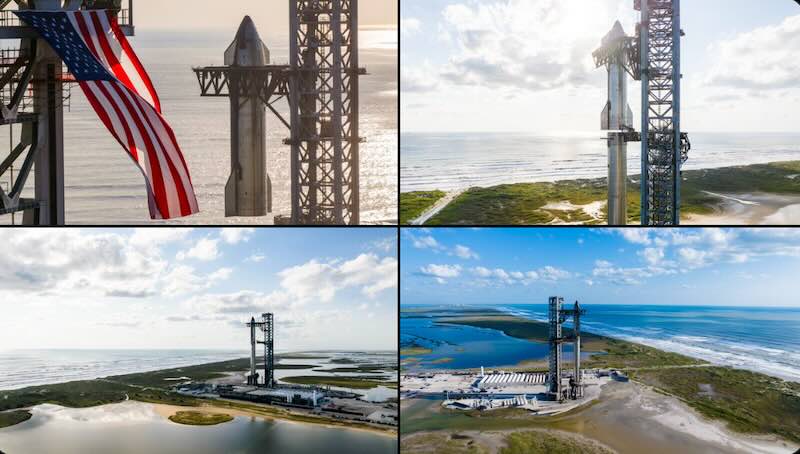SpaceX has officially scheduled Starship’s ninth test flight for May 27th at 6:30 PM Central Time, marking a significant milestone in the company’s rapid development program. Upcoming mission represents the first launch using a flight-proven Super Heavy booster—specifically the same hardware that successfully launched and returned during Flight Test 7. Announcement comes after extensive post-flight analysis of Test Flight 8 engine failure, which resulted in the loss of the upper stage approximately 5.5 minutes into ascent, check out SpaceX Flight 8 Report blogs.
The decision to reuse Super Heavy booster hardware demonstrates SpaceX’s confidence in their recovery and refurbishment processes. Twenty-nine of the booster’s 33 Raptor engines have already proven their reliability through previous flight operations, while single-use components like ablative heat-shielding have been replaced with fresh hardware. Approach aligns with SpaceX’s long-term goal of achieving rapid reusability across the Starship system.
However, Flight 9 mission won’t attempt the dramatic “chopsticks” catch that has become synonymous with recent test flights. Instead, the booster will perform a controlled landing in the Gulf of America while carrying several experimental procedures designed to generate performance data for future missions.
SpaceX engineers have planned several ambitious tests during the booster’s descent phase. Following stage separation, the Super Heavy will execute a controlled flip maneuver—but this time, the direction won’t be random. Engineers will block specific vents on the vehicle’s hotstage adapter, allowing thrust from Starship’s engines to push the booster in a predetermined direction.
The booster will also attempt to fly at a higher angle of attack during descent, potentially reducing speed and propellant consumption during the landing burn sequence. Technique could prove crucial for operational missions where fuel efficiency directly impacts payload capacity.
Perhaps most intriguingly, Starship Flight 9 will demonstrate unique engine configurations during the landing burn phase. One of the three center engines normally used for final descent will be intentionally disabled, forcing a backup engine from the middle ring to take over. Booster will then transition to just two center engines for the final landing sequence.
These tests directly address reliability concerns raised by Flight Test 8’s engine failure. SpaceX’s post-flight investigation revealed that the most probable cause for engine ignition issues during boostback and landing burns stemmed from thermal conditions affecting individual engine igniters. SpaceX has since conducted extensive ground testing, including over 100 long-duration Raptor firings at their McGregor facility.
The Flight Test 8 failure provided valuable data about Raptor engine reliability under flight conditions. An energetic event near one of the center Raptor sea level engines led to the loss of multiple engines and ultimately the vehicle itself. SpaceX’s investigation identified hardware failure in the upper stage’s center Raptor engine as the root cause, resulting from inadvertent propellant mixing and ignition.
Engineers have implemented several countermeasures for upcoming flights, including additional preload on key joints, a new nitrogen purge system, and improvements to the propellant drain system. Future Starship variants will incorporate the Raptor 3 engin, which includes additional reliability improvements specifically designed to address the failure mechanism identified in Flight Test 8.
While the booster experiments capture attention, Starship’s upper stage will repeat its suborbital trajectory with objectives that weren’t achieved during previous test flights. SpaceX hasn’t specified exactly which targets remain unmet, but the pattern suggests continued testing of reentry heating, attitude control, and landing procedures.
SpaceX emphasized that while Flight Test 8’s failure occurred at a similar timeline to Flight Test 7, the failure modes were distinctly different. Mitigations implemented after Flight Test 7—addressing harmonic response and flammability in the ship’s attic section—worked as designed before the new failure emerged.
Related Post
SpaceX V3 Starlink Satellites: 20x More Powerful Than Previous Generation, Launch on Starship
SpaceX $1.8B Florida Expansion: Gigabay Facility & New Starship Launch Pad Coming by 2025
SpaceX Aims for 400 Starship Launches: Shotwell Reveals Ambitious Space Plans
